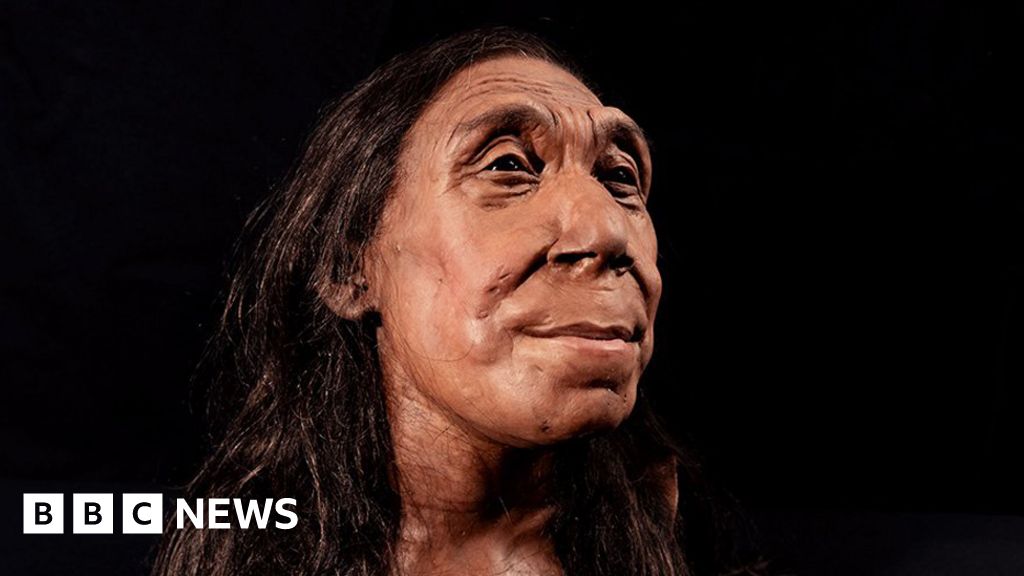- Sir David opened up about his love for the hobby ahead of his new documentary
Sir David Attenborough has said that the discovery of an enormous sea monster has revealed to him the ‘romance’ of fossil hunting.
The 97-year-old opened up about his love-affair with searching for ancient relics ahead of his new BBC documentary about the recent discovery of a pliosaur skull which was found off the coast of England earlier this year.
The ancient creature scoured the seas nearly 150 million years ago and was known as the ‘apex predator in the ocean’, with some experts convinced that it could even overpower a Tyrannosaurus Rex.
Sir David has been an avid fossil collector since he was a youngster, but admitted that he had never come across such a unique find before.
The wildlife presenter added that he had found a ‘romance’ with finding fossils and described it as a ‘joy’ that he had ‘never got over’.
Sir David said his enjoyment of fossil hunting is driven by a ‘very basic curiosity but also a sense of privilege’.
He went on: ‘You can tell in many cases because actually, there is a little brown line on a rock that leads you to believe there is something in there. And you can calculate were you should hit it in order to get it to split!
‘Occasionally, and it’s happened to me, occasionally you will see in complete detail that the rock has split along the junction between a shell and the mud, and it just opens, and there it is, absolutely perfect.
‘It doesn’t require any further excavation, it doesn’t require messing. There’s this wonderful creature that nobody has seen before you in 150 million years. If you’re young or old, it’s a joy!
‘I’ve never got over it really. It’s very romantic. I mean, people talk about science, the cold, calculating eye of science, which of course you have to have, but it doesn’t prevent you from having romance as well.
Talking about how he got into fossil hunting, Sir David added: ‘It’s easy to do when you’re eight-year-old, you know, it’s that little romance which I never lost. I used to go at weekends.
‘The thing is in Leicestershire was that they had Ironstone workings, which were eventually worked out so there were these empty quarries.
‘You could get on your bicycle and ride for 15 miles or so and get lost in this great expanse of rock.
‘All these boulders that nobody had ever hit! You’d think, “surely the next one! If I hit that one I’ll find something nobody has seen before.’
Sir David’s new BBC documentary, Attenborough and the Giant Sea Monster, will follow the wildlife presenter as he investigates the discovery of huge skull.
He will be joined by a team of expert scientists and palaeontologists as they embark on an excavation and restoration of the rare discovery, which they believe could be a new species of pliosaur.
The ancient pliosaur was the ‘ultimate killing machine,’ able to navigate the ocean at high speed and kill its prey with a single bite.
The skull has around 130 long and razor-sharp teeth. Each tooth has fine ridges at the back to pierce its prey’s flesh and prepare itself for a swift second attack.
It’s prey was dolphin-like creatures and other pliosaurs, scientists told the BBC.
Pliosaurs had jaws more than twice as powerful as today’s saltwater crocodiles.
Sir David said that he spoke to experts who told him that the pliosaur would have been able to overpower a Tyrannosaurus Rex.
He said: ‘There’s an American expert, Dr Andre, and he was blown away by it. He said, “it was the most terrifying animal in the seas”.
‘I asked him perhaps a rather childish question because it was very big, and it’s bigger than the Tyrannosaurus rex by long way, so I asked this schoolboy question.
‘I said: “Now, supposing Tyrannosaurus rex met this extraordinary pliosaur, who would win?” And this chap was American and Tyrannosaurus Rex is an American dinosaur, so I expected his answer to be that.
‘He said: “Well, I think it probably was this pliosaur that won.”
The exciting discovery was made when fossil enthusiast Phil Jacobs was walking along the rocky beaches of Kimmeridge Bay last year when one morning he discovered a jaw of a giant pliosaur.
The site is renowned for its fossils and features some of the most important geological discoveries on the Jurassic Coast.
Many of these were found by Dr Steve Etches MBE, who has spent more than 30 years amassing over 2,000 specimens.
Mr Etches was subsequently called in to assess the find and he speculated that the rest of the skull could still be encased in the cliff above.
He gathered a team of experts to excavate the rest of the fossil including fellow fossil hunter Chris Moore, who runs a small family fossil business in Charmouth.
While the avid fossil hunters have worked with each other for decades, they describe this particular fossil as the biggest discovery they have ever faced.
Dr Etches said: ‘There’s nothing comparable to it today.
‘It’s a big carnivorous reptile and one of the largest that ever lived in the sea. It’s even bigger than a T-Rex, these are larger and more ferocious.’
After the skull was safely extracted, it was taken to Mr Etches’ workshop nearby where restoration work began. It took several months to bring it back to life.
This including moulding crowns for the skull from remains of the iconic trihedral shape pliosaur tooth which Mr Moore found in the cliff.
With the help of paleobiologists, visual effects sequences and digital scans, viewers will witness the peak of scientific research as they’re given a detailed insight into the life of this pliosaur seeing how it looked, moved and hunted its prey.
Attenborough and the Sea Monster will air at 8pm on New Year’s Day on BBC One and iPlayer.

James Parker is a UK-based entertainment aficionado who delves into the glitz and glamour of the entertainment industry. From Hollywood to the West End, he offers readers an insider’s perspective on the world of movies, music, and pop culture.








